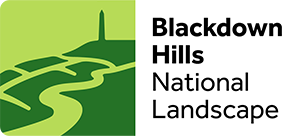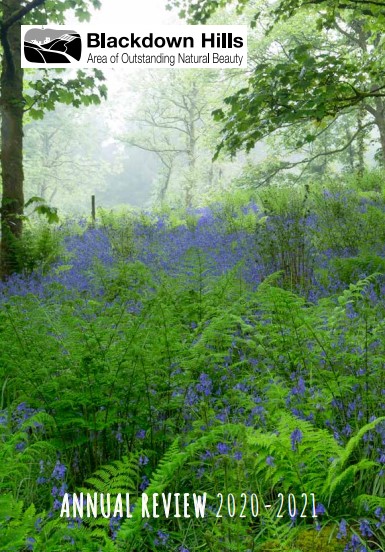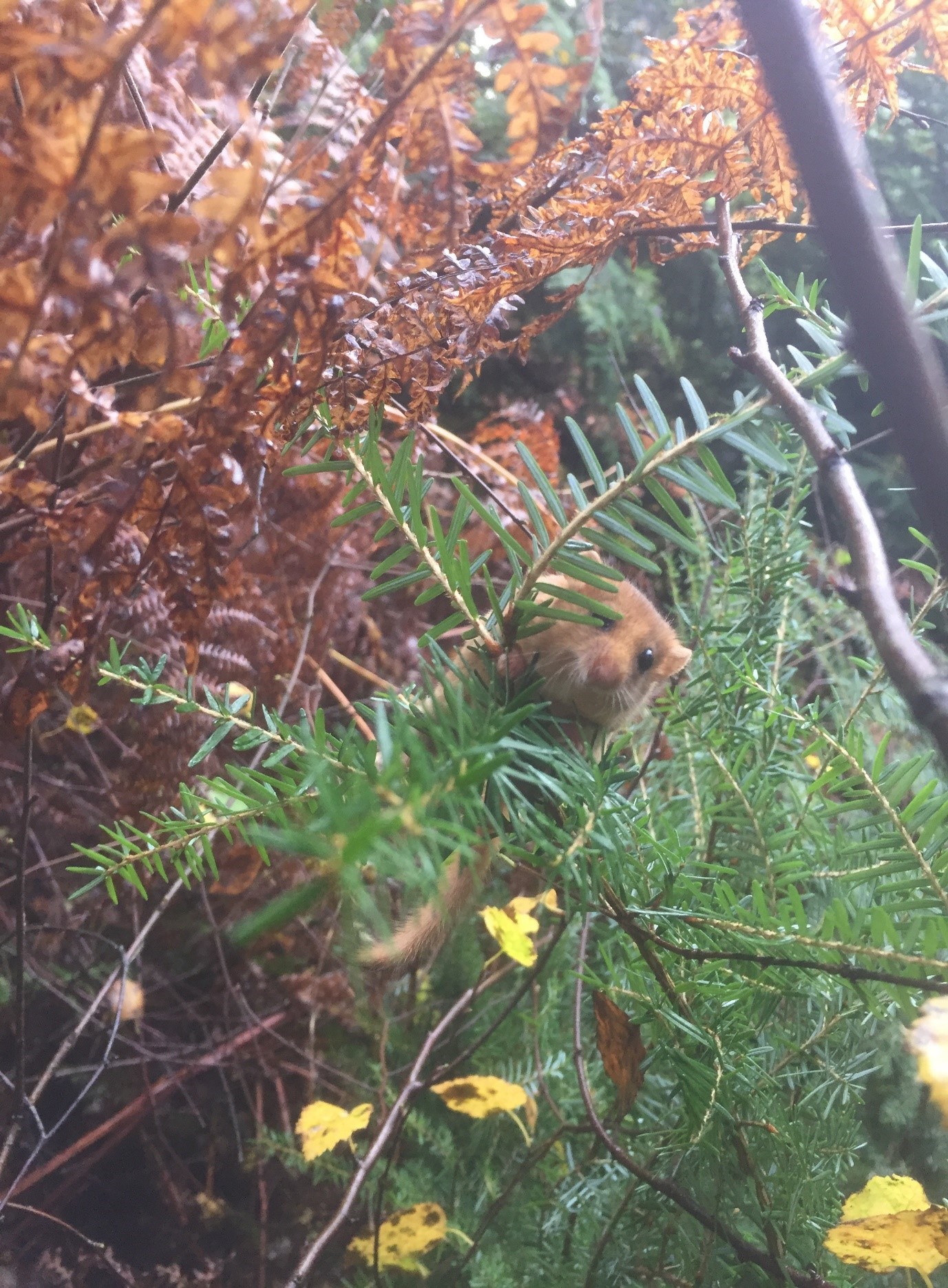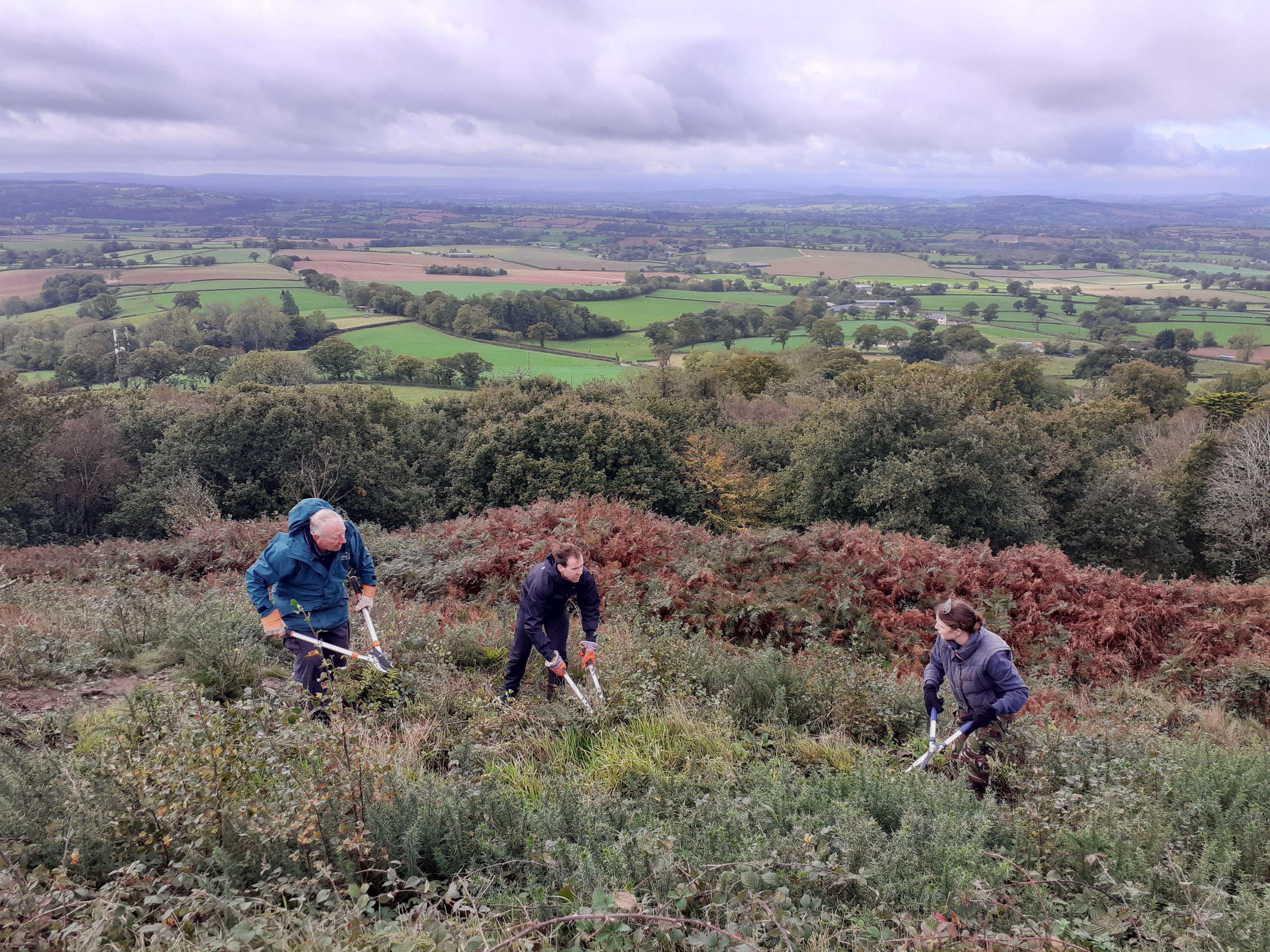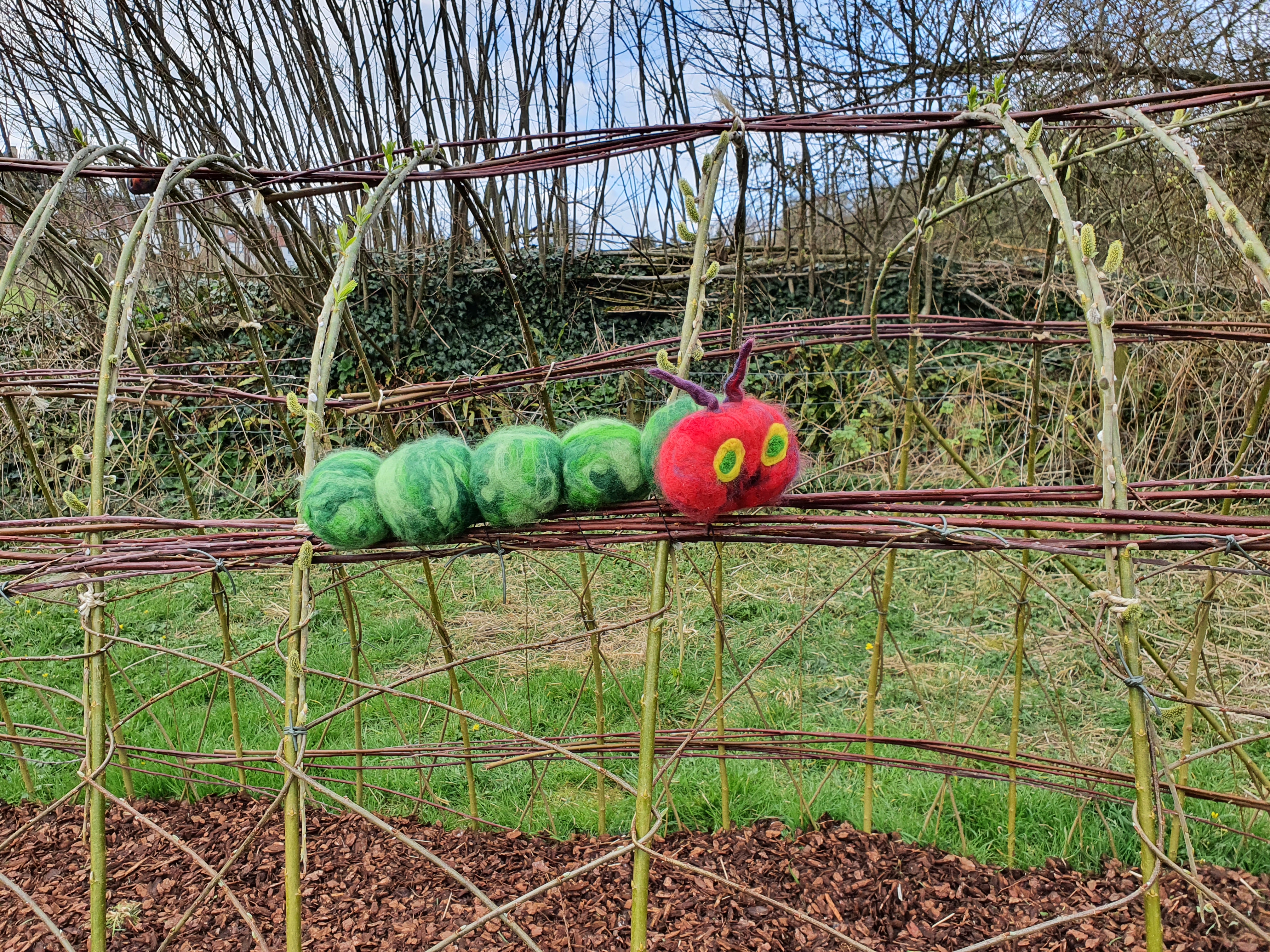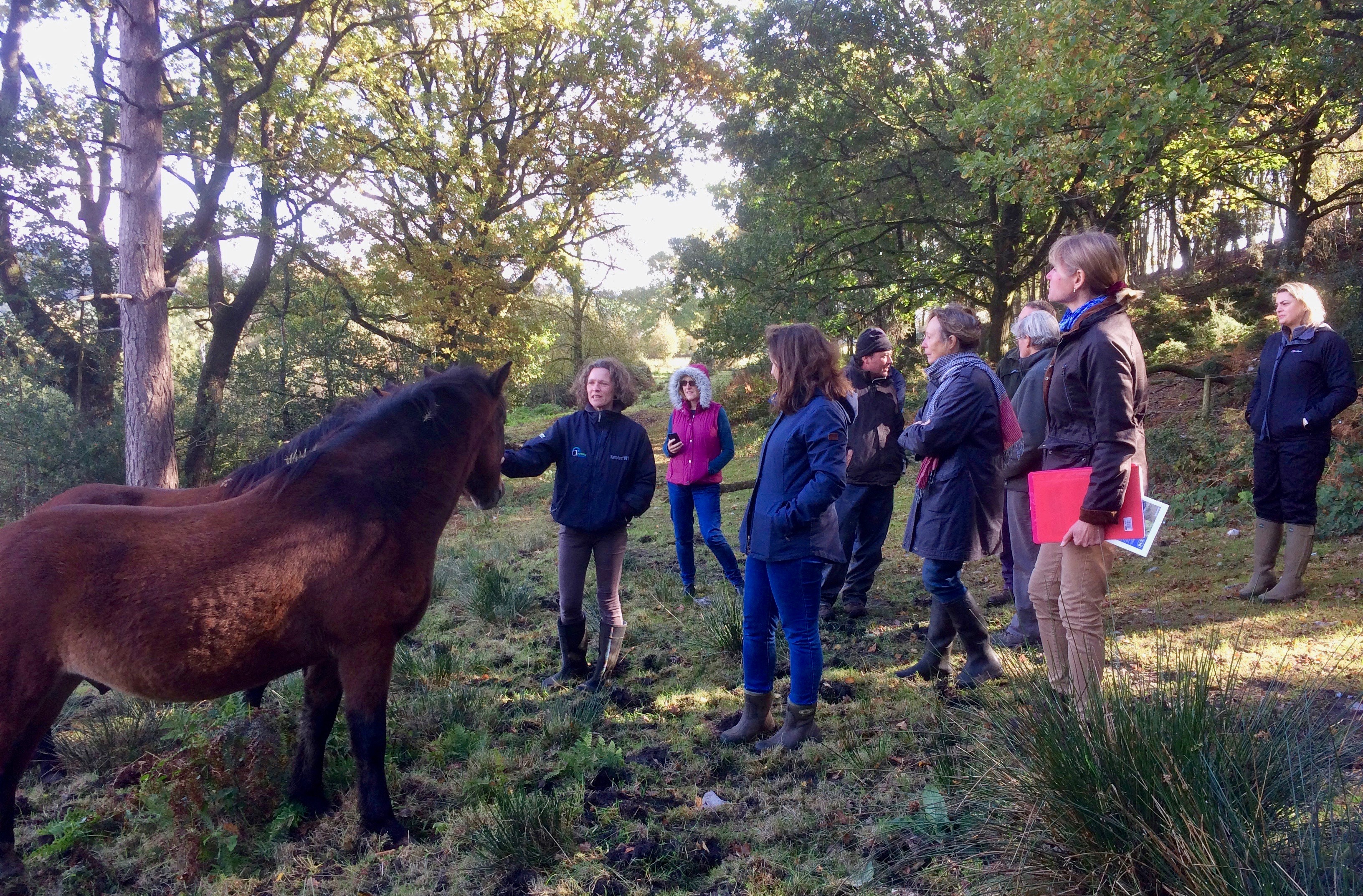Blackdown Hills AONB
Annual Review 2020-21
Chair’s Foreword
 This year was my first year as the chair of Blackdown Hills Area of Outstanding Natural Beauty (AONB) Partnership, and what a year it turned out to be!
This year was my first year as the chair of Blackdown Hills Area of Outstanding Natural Beauty (AONB) Partnership, and what a year it turned out to be!
The delivery of my role would not have been possible without the support of my two vice-chairs, Bob Nelson and John Greenshields, the Partnership Management Group and the AONB team led by Tim Youngs.
The pandemic presented many challenges for all of us and our response to these has demonstrated amazing resilience and innovation. This has been very evident across our many projects during the year where the use of new technologies has enabled individuals, farmers, landowners, communities, and partners to fully engage when face-to-face contact was not possible. An unexpected benefit has been participation and contributions in much greater numbers than might have been achieved in normal times.
As always (and even in these unusual times) there has been a great deal going on throughout the year and you will read about some of the major items in this review. I find the span amazing, addressing issues such as climate change, wellbeing and nature recovery, each underpinned by the invaluable contributions that many of you make as volunteers.
At the same time, it has been good to see some smaller ‘below the radar’ projects delivering. Here are a couple that caught my imagination. The Neroche Woodlanders ‘Old wood, new growth’ project demonstrated how a group of volunteers progressed from chainsaw training to felling and then using the wood to build raised beds with deer fencing to create a tree nursery. Such an impressive cycle of activity. The other project, led by Somerset Wildlife Trust, to enhance the habitat for dormice in Dommett Wood showed not only improved dormice habitat but also improved access for visitors. Just two of the many examples of the ways in which we can enable people to benefit from engaging with nature.
I hope that you will remain as inspired as I am to participate wherever possible in the work of the AONB.
Bruce Payne
Chair, Blackdown Hills AONB Partnership
Planning
Over the course of the year, we considered a total of 134 planning applications – an increase of 13% compared with the previous 12 months. We provided advice and comments in response to 73 of them.
We provided responses to three planning policy consultations: At a national level, the Government’s planning white paper – Planning for the Future; East Devon Local Plan issues and options and duty to co-operate; and Luppitt neighbourhood plan.
We also dealt with consultations and enquiries for pre-application discussions, felling licences and tree planting, electricity connections, rights of way and access
Communication, education, and visits to the Blackdown Hills
As the pandemic progressed, we took the opportunity to build on growing public interest in the natural world and increasing participation in outdoor recreation. Our communications encouraged safe and responsible visits to the Blackdown Hills to help support residents and businesses, and to protect wildlife from harm.
The work we’d done in previous years to upgrade our website meant that we could easily share visitor information online. Our website, blogs, and social media channels provided us with the tools to share up-to-the-minute visitor advice and material to inspire, inform and educate our stakeholders. We completed our new visitor guide shortly before the first lockdown and, while we were unable to distribute it in its printed form, we were able to publish an online version.
We commissioned a series of eight ‘explore and create’ videos for children, each featuring a different location in the Blackdown Hills and a creative activity. At a time when we were unable to arrange in-school activities, these provided fun yet educational activities for children and remain a useful resource for parents and teachers to access online.
Volunteering
Our volunteering activities were significantly impacted by the pandemic. We were able to arrange some group volunteering activities, adapting to lockdowns and Covid regulations as they arose.
To keep our volunteers in the loop, we organised a variety of online events and started a regular volunteer newsletter. These were very well received and especially helpful for volunteers who were shielding or unable to attend any group events.
Despite the many challenges in this period, participants achieved 468 hours of volunteer time.
Volunteer work and events undertaken included:
- Crayfish surveying on the Sheldon Stream during the summer: Volunteers who worked on the Culm Community Crayfish project surveyed for native white-clawed crayfish and invasive signal crayfish within the River Culm catchment.
- Heritage At Risk site management (working with Devon County Council): Volunteers undertook scrub clearance on Hembury Hillfort and Dunkeswell Abbey during the autumn.
- Somerset Recovery College walks: Guided walks for people recovering from the lived experience of mental health issues.
- Introduction to countryside management with Forestry England: Working at various forestry sites to undertake a range of practical countryside work.
- Guided nature walks around Chard reservoir with Chard WATCH group.
- A series of online talks during the winter lockdowns. A collaboration between the three Somerset AONBs (Blackdown Hills, Quantock Hills and Mendip Hills) and Somerset Wildlife Trust. These included talks by Jake Chant (Devon Wildlife Trust’s beaver field officer) and Rosie Cotgreave (Saving Devon’s Treescapes project officer).
Somerset Nature Connections
July 2020 – October 2023
This year saw the development of the Somerset Nature Connections project – a three-year partnership between Somerset Wildlife Trust and the three Somerset AONBs (Blackdown Hills, Quantock Hills and Mendip Hills).
The project aims to help individuals and groups to connect with nature to benefit their physical and mental health, to reduce some of the barriers which prevent people from accessing natural spaces, and to develop a network of skilled volunteers who can support communities for the longer term.
The project is funded by the National Lottery Community Fund, Hinkley Point C Community Impact Mitigation Fund, Somerset County Council Public Health and Improving Lives to Prevent Demand Fund, Discovery Community Fund, South Somerset District Council and St James Foundation.
Somerset Nature Connections activities will include:
Running nature and wellbeing self-care courses for people experiencing mild to moderate anxiety, stress or depression. Sessions include mindfulness, practical conservation, nature exploration, wildlife identification, outdoor art and bushcraft.
Upskilling and improving the confidence of community groups: For community groups supporting people with (or who are at higher risk of developing) mental health problems, for example adults with learning disabilities, those with long term health conditions, carers, and isolated older people. Sessions cover the health and wellbeing benefits of local natural environments, health and safety practicalities and outdoor activities. At the same time the sessions provide group leaders with the knowledge and skills to help them to deliver nature-based wellbeing activities for their groups in future.
Recruiting and training 30 volunteers: Some volunteers will provide peer support to new participants of the nature and wellbeing course; some will support the project officers to deliver courses and support groups; others will come to share a specific skill. The volunteers will then be able to use their skills and experience to continue to support others after the project ends.
Connecting the Culm
January 2019 – December 2022
This year marked the halfway stage of the Connecting the Culm (CtC) project and saw significant progress made through a wide range of engagement and co-creation activities.
Work focused on shaping a Blueprint for the future of the River Culm – a long-term (at least 25-year) management plan to guide and inform all investment decisions in the River Culm catchment to:
- make the River Culm catchment more resilient to flood and drought
- improve water quality
- support biodiversity and habitat
- involve local people and organisations in the process.
Inevitably, Covid restrictions affected planned face-to-face activities but the team adapted quickly to making the most of online opportunities. They continued to gather evidence through river catchment modelling and engaged organisations and individuals across the catchment to build up a picture of how the River Culm was performing.
In October, an online event – Discover the River Culm – brought together a range of specialists with detailed knowledge and insights into the science and heritage of the River Culm. Over 100 people joined the event to learn about and discuss a range of issues. The event received very positive feedback. This led on to an online forum in November to launch the development of the Blueprint for the River Culm, with presentations by Steven Johnson (Project Manager), Lord Cameron of Dillington (former Chair of the Countryside Agency) and Anna Rios Wils (Head of Research Floods and Water at DEFRA). An online whiteboard was created to encourage discussion and comments on initial ideas, together with an online survey.
Architectural illustrator Richard Carman was commissioned to produce a series of interactive catchment illustrations to capture what a future vision for the River Culm catchment might look like, bringing to life some of the issues the Culm Valley faces as well as the opportunities for introducing nature-based solutions.
Early in 2021, a series of events, workshops and working group sessions took place online to help shape the Blueprint, focusing on trees for the catchment, water quality, nature-based solutions, and access. The outcomes from these will lead into an action planning phase for the summer and autumn of 2021.
Meanwhile a Culm Himalayan Balsam Action Group was formed, an example of new community-led action that has come out of these discussions.
Westcountry CSI (Citizen Science Investigations) on the Culm has continued to grow, with good attendance at online engagement and training events. This will make an important contribution towards monitoring and improving our understanding of the water quality across the Culm catchment. An event in March celebrated the work of these volunteers and launched a new Westcountry CSI Lower Culm water-quality scorecard.
The Connecting the Culm project team looks forward to building on this year’s progress, taking forward the implementation of nature-based solutions and bringing together all stakeholders to shape the Blueprint, agree priorities and create a resilient plan for the whole community.
Connecting the Culm is part of the wider Co-Adapt programme (funded by EU Interreg 2 Seas) which has other projects running in Somerset and across Europe.
Blackdown Hills Challenge Fund
In 2020, Blackdown Hills launched a new Challenge Fund to support local projects to tackle the biodiversity crisis and help people to learn about and appreciate the value of habitats and species. Grants of up to £5,000 provided up to 75% of each project’s costs. Here are details of the projects which were supported by the Challenge Fund:
Enhancing Dommett Wood for Dormice
Somerset Wildlife Trust carried out work to improve its Dommett Wood nature reserve for dormice. This involved thinning the woodland and removing non-native species to encourage a more diverse understorey of native species to develop – the most important habitat type for dormice. The work quickly paid off, with three dormice being spotted while improvements were being made!
Old Woods, New Growth
Neroche Woodlanders have been working towards being able to grow their own broadleaved saplings to restock the woodland at Young Wood. They established a small tree nursery and kitchen garden so that volunteers and participants from disadvantaged groups can be closely involved in all stages of growing. This involved clearing a site, creating a planting bed, erecting a polytunnel, an irrigation system and deer fencing.
River Otter Beaver Project
In August 2020, following the completion of River Otter Beaver Trial, England’s first wild breeding population of beavers for 400 years was given the permanent right to remain. Devon Wildlife Trust continued their work to raise public awareness through volunteering, training, information materials and web pages. They also installed cameras to record fascinating footage of the beavers at work!
Wild Play in Underway
Underway Meade is a local community and wildlife site based in Combe St Nicholas. The site provides habitats for wildlife and a space for residents of all ages to enjoy, with picnic benches, a bug hotel, and a fenced area for families with young children. Underway Mead volunteers have been working to make the site more attractive for families, primarily by establishing a sensory garden for outdoor play and the exploration of local wildlife.
Sustainable Development Fund
Each year Blackdown Hills AONB’s Sustainable Development Fund (SDF) provides grants of up to £2,000 to projects that bring social, environmental and economic benefits to the area.
Here are details of the projects that were supported through the Sustainable Development Fund in 2020/21:
Otterhead Forest School – raised beds
Otterhead Forest School works with children and young people who need additional social, emotional and mental health support, and in recent years has been working with adult groups with different support needs. The Forest School constructed three raised growing beds, helping their varied beneficiary groups to learn construction skills, learn about growing food and looking after plants, understand healthy eating choices and also to provide ingredients for cooking as part of their education programme.
Stockland Turbaries – information panels
Despite the fascinating biodiversity, spectacular views and access opportunities found within the Stockland Turbaries, many local people and visitors do not fully understand their value or the efforts that go into managing them. Four illustrated information panels were designed and constructed to tell the story of the Turbaries to raise awareness, encourage access, and inspire parishioners and other volunteers to become involved in their management.
Improvements to Longmead nature area
Longmead Environmental Action volunteers have over the past few years established a nature area at Longmead Field in Hemyock – with a pond, mature hedge banks, shrubs, trees and rough grass, along with bat and bird boxes. With SDF support the group was able to further improve this nature area. They obtained professional ecological advice on how best to enhance the site, undertook work to clear and improve the health of the pond and created an information board for visitors.
Water voles at Ferne Animal Sanctuary
Water voles are endangered in the United Kingdom and urgent action is needed to ensure their long-term survival. SDF helped fund the first year of a project to reintroduce water voles at Ferne Animal Sanctuary, as well as improving the habitat for water voles and installing an information board to help people find out more about the species. Over time it is hoped that these water voles will breed and disperse from the ponds at Ferne into nearby water courses and boost numbers in the Blackdown Hills AONB overall.
www.blackdownhills.org.uk/funding
Nature Recovery Plan
In July 2019, The Colchester Declaration – the AONBs’ commitment to nature’s recovery, climate action and people engagement – was launched, linking directly to the government’s 25 Year Environment Plan.
Blackdown Hills AONB embraced this rallying cry to play our part in tackling the climate and biodiversity emergency. We embarked on preparing a Nature Recovery Plan, underpinned by a State of Nature report that identifies the important habitat and species in the Blackdown Hills, as well as the networks and connections between them.
This work highlighted the importance of the Blackdown Hills’ AONB designation to conserving and enhancing the area’s natural capital and its special qualities including its patchwork of small fields, and its diverse habitats for example springline mires, ancient woodlands, and hedgerow networks.
We plan to take action to recover populations of a set of ‘champion species’, working in partnership with others and supported by citizen scientists. The species we identified for this work, for example horseshoe bats and hazel dormice, are both indicators of a healthy and connected landscape and associated with the Blackdown Hills AONB’s special qualities.
The State of Nature Report will be used to identify priorities for action and clusters of landholdings that can be targeted through funding mechanisms, to restore habitat networks in the Blackdown Hills. The aim is to make these networks better, bigger, more and joined, to allow viable populations of species to move freely between them once again.
www.blackdownhills.org.uk/naturerecovery
National Grid Landscape Enhancement Initiative
November 2019 – October 2024
The Landscape Enhancement Initiative (LEI) helps fund local visual improvement and landscape enhancement schemes in 30 of the English and Welsh AONBs and National Parks that are crossed by National Grid electricity transmission lines.
This year, the Enhancing the Hills project saw work being completed on four holdings in the Blackdown Hills close to the National Grid line to restore small orchards and hedgerows and create new hedges. Preparatory work was undertaken in the Stockland area to survey potential sites suitable for meadow creation and restoration.
At the very end of the year, we heard that a second project, Hillforts of the Hills, had been approved.
www.blackdownhills.org.uk/nationalgrid
Environmental Land Management
January 2019 to March 2021
The Environmental Land Management (ELM) Tests and Trials project was part of a larger Defra-funded Farming for the Nation programme, to provide information to help Defra in the design of the new Environmental Land Management scheme. Blackdown Hills AONB is one of 12 AONBs contributing to the programme nationally, with each AONB focussing on a different aspect of ELM.
The purpose of the Blackdown Hills project was to explore how investing in the capacity of landowners to liaise and build trust amongst each other can improve ELM take-up in high-nature-value landscapes. The aim is to develop peer-to-peer collaboration, with ‘farmer ambassadors’, with a view to improving connectivity between close or adjoining holdings, allowing collective identification of public goods and agreement on appropriate approaches to their management.
A team was formed to deliver the project, including a project manager, two expert advisers, two farmer ambassadors and 20 farmer peers (participants).
Findings from the project underlined the importance of:
- Peer-to-peer collaborative working to encourage transition to Environmental Land Management, particularly for those farms that have not chosen to enter the agri-environment schemes previously.
- Considering the farm as a business from the outset of the process.
- Having payment levels substantially higher than under Countryside Stewardship.
Farming and Woodland Group
June 2018 – June 2021
The Blackdown Hills Farming and Woodland Group is the name of the network of farmers and landowners across the Blackdown Hills AONB, providing environmental training and experience-sharing activities.
The project, facilitated by Gavin Saunders, was led by Butterfly Conservation, supported by Blackdown Hills AONB, Blackdown Hills Rough Grazing Association, Blackdown Hills Woodland Association and others, and funded by Defra’s Facilitation Fund programme.
Due to the pandemic, face-to-face training events were impossible for much of the period so, where feasible, some sessions were delivered online.
A range of farmers and other landowners from amongst the 80 members of the group, took part in online training on how to identify common wildflowers on the farm, how to measure the carbon footprint of farm operations, how to benchmark a farm business’ performance against other similar businesses, and how to maximise the value of trees as cover and forage for livestock.
The most popular session was an evening talk by Rebecca Hosking, farmer and former BBC filmmaker, who made an impassioned plea for regenerative farming methods which build soil and biodiversity and respect the character of the land.
In between the lockdowns there were face-to-face outdoor gatherings to discuss the use of ponies for conservation grazing, and a visit to a farmer who coppices his hedgerows for firewood.
Meanwhile a key role of the network has been to share emerging information with landowners about the changes to farming support taking place during Agricultural Transition.
www.blackdownhills.org.uk/farmingandwoodland
Financial information
AONB Income
Income brought forward from 2019/20: £42,639
Defra: £170,667
Devon County Council: £10,500
Somerset County Council: £5,122
Mid Devon District Council: £8,500
East Devon District Council: £9,323
South Somerset District Council: £6,000
Somerset West and Taunton Council £10,000
Other income: £30,817
Income carried forward to 2021/22: -£45,640
Total income £247,928
AONB Expenditure
Staffing: £144,184
Office costs: £7,613
Partnership costs: £12,356
Partnership projects: £61,892
Sustainable Development Fund and Challenge Fund: £21,883
Total expenditure: £247,928
External project income
Enhancing the Hills – National Grid: £7,052
Environmental Land Management: £34,970
Connecting the Culm – Water Environment Grant: £27,248
Connecting the Culm – Interreg 2 Seas: £110,081
Total external project income: £179,351
Carried forward from 2019/20
Enhancing the Hills – National Grid: £22,093
Connecing the Culm (funding surplus) applied in 2020/21: £33,000
Total project (income and carried forward): 234,444
External project expenditure
Enhancing the Hills – National Grid: £21,488
Environmental Land Management: £34,970
Connecting the Culm – Water Environment Grant £27,248
Connecting the Culm – Interreg 2 Seas: £143,081
Total external project expenditure: 226,787
Carried forward to 2021/22
Enhancing the Hills – National Grid: £7,657
Total project expenditure and carried forward £234,444
Sustainable Development Fund and Challenge Fund grants
Enhancing Dommett Wood for Dormice: £4,150
Wild Play in Underway: £1,700
Otterhead Forest School: £2,000
Stockland Turbaries: £2,000
Longmead Environmental Action: £1,761
Old Woods, New Growth: £4,422
Ferne Animal Sanctuary: £1,900
River Otter Beaver: £3,950
Total: £21,883
Blackdown Hills Area of Outstanding Natural Beauty is funded by Defra, Devon and Somerset County Councils, as well as East Devon, Mid Devon, Somerset West and Taunton, and South Somerset District Councils.
We would also like to thank the many other organisations that have supported the projects that we lead or are a key partner in. In 2020/21 we received additional project funding from EU Interreg 2 Seas, Water Environment Grant (Rural Development Programme for England), Environment Agency, Natural England, Landscape Enhancement Initiative (National Grid), Public Health Somerset, National Lottery Heritage Fund, Local Levy (South West Regional Flood and Coastal Committee), National Association for AONBs, Devon Wildlife Trust, Butterfly Conservation, Historic England, local parish councils and others.
